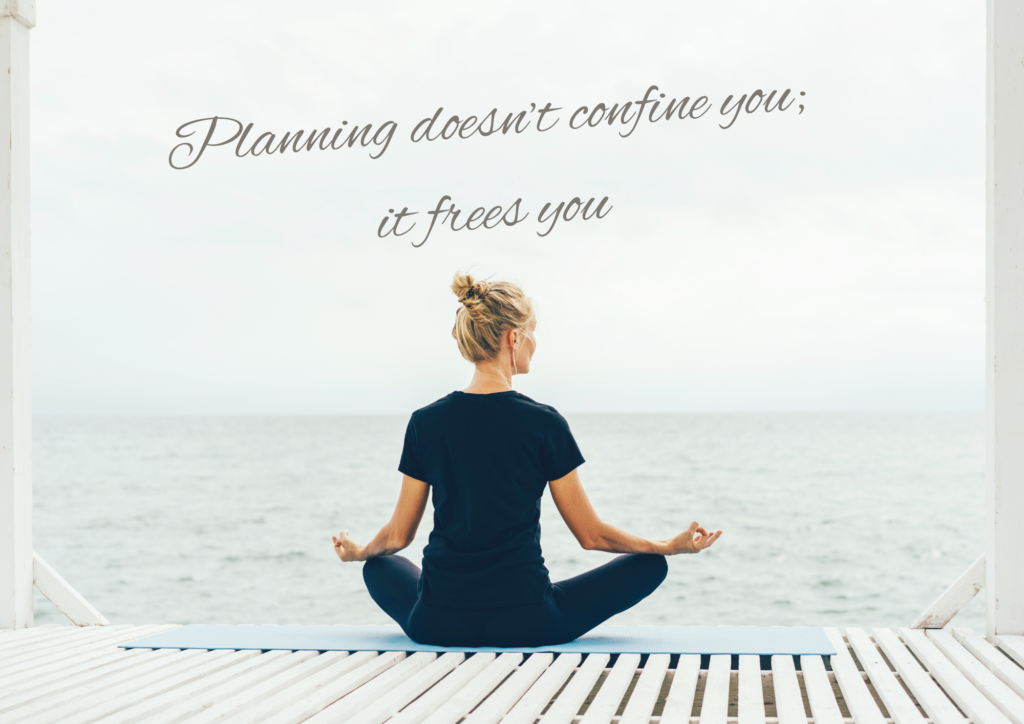
In today’s world, where we’re constantly bombarded with information and demands, planning often gets reduced to a simple checklist. We think it’s just about getting more done—checking off tasks, squeezing every bit of efficiency out of our days. I used to believe that too. If I could just plan perfectly, I thought, I’d finally feel on top of things. But over time, I discovered something crucial: planning isn’t just about productivity. It’s about finding peace, clarity, and building a life of intentional living that truly aligns with what matters to me.
Changing the View: Planning as a Tool for Calm, Not Just Tasks
We often picture to-do lists and packed schedules when we think of planning. But real planning goes beyond that. It helps us clear mental clutter, ease stress, and find direction. A good plan gets rid of decision fatigue, one of the biggest reasons we feel overwhelmed every day. Research shows that when we plan ahead, we free up our brains to focus on what’s important, instead of scrambling to figure out the next step. (Source: “Decision Fatigue: The Effects of Many Choices on Everyday Decisions,” Journal of Consumer Research, Kathleen D. Vohs et al.)
The Mind Benefits of Intentional Planning: Building Calm in Your Brain
Intentional Living isn’t about being rigid; it’s about creating a flexible structure that supports your well-being. A study from Harvard Business Review found that people who take time to reflect on their plans feel less stressed and make clearer decisions. (Source: “Make Time for Reflection,” Harvard Business Review, Giovanni Gavetti and Rodolphe Durand.) When you plan with intention, you make space for thoughtful choices, instead of just reacting to whatever comes your way.
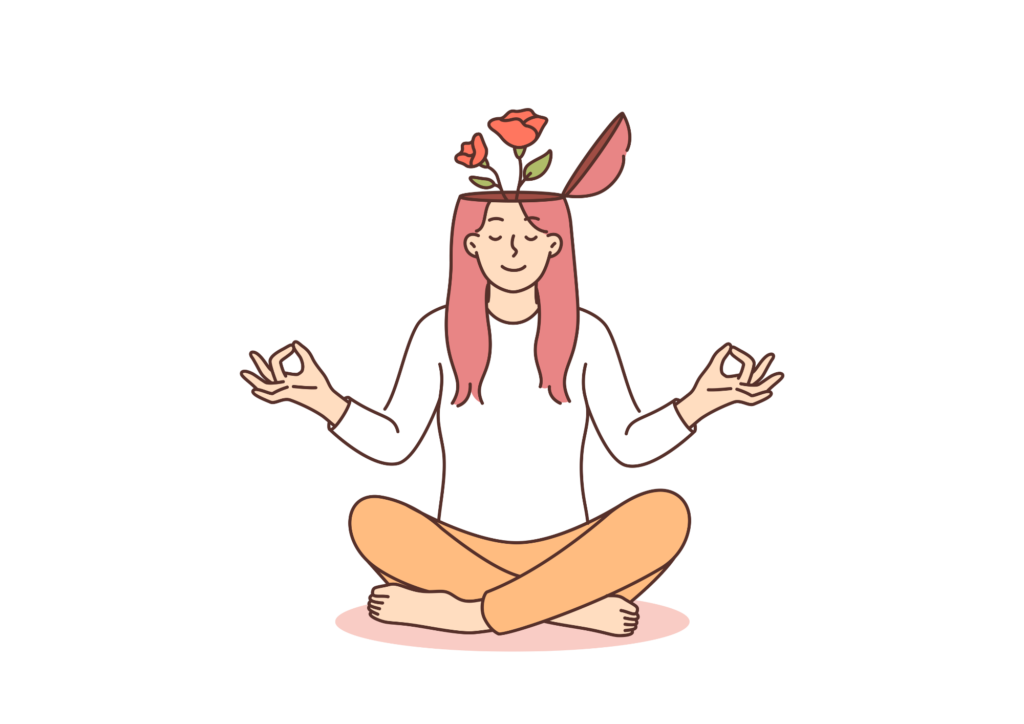
My Personal Journey: From Daily Chaos to Finding My Calm
Let me tell you about my own experience. I used to start my mornings in a complete rush—jumping from one task to another without a clear plan. I’d check my email, scroll through social media, and get pulled in a million directions. By mid-morning, I’d feel completely overwhelmed and scattered. There was no sense of purpose, no real direction.
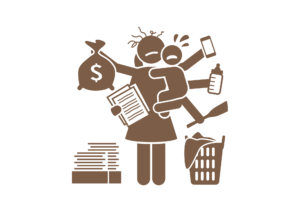
This way of living was exhausting and unsatisfying. I felt like I was constantly putting out fires, never really getting anything meaningful done. I longed for a sense of calm, for a feeling of control, but I didn’t know how to get there.
Then, I started trying out intentionally planning. I began by writing down my top three priorities for the day. I scheduled time for reflection, and quiet moments to check in with myself. I started time-blocking, not just for work tasks, but also for self-care, for walks in nature, and for moments of quiet.
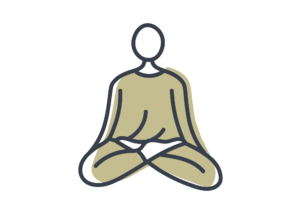
The change was slow, but it was real. I began to feel more grounded, more centered. My days had a sense of purpose, a flow that felt natural. I wasn’t just reacting to life; I was actively shaping it. I was moving from a place of daily chaos to a place of finding my calm.
How to Plan for Peace, Not Just Efficiency: Practical Steps
- Start with Your Values: What’s truly important to you? Make sure your plans reflect your values, so your actions feel meaningful, not just urgent.
- Time-Block for Balance: Don’t just schedule work; plan for rest, self-care, and personal growth. This ensures your plans support your overall well-being.
- Embrace Flexibility: A good plan isn’t set in stone. It allows for changes and unexpected events without throwing you into chaos.
- Clear Mental Clutter: Write everything down. Free up mental space so your brain isn’t overloaded with remembering tasks.
- Reflect and Adjust: Regularly review your plans and adjust them to make sure they still fit your goals and well-being.

If you want more insight on the benefits of using a digital planner, check out this article: 5 Great Reasons to Use Digital Planners. And if you’re interested in aligning your planner with mindfulness, check out this post: How to Use Your Planner to Cultivate a More Intentional Life.
The Link Between Planning and Inner Peace: Giving Yourself a Gift
Intentional Living can be a powerful way to take care of yourself. When you plan ahead, you’re giving yourself the gift of clarity and calm. You’re setting yourself up for success—not just in terms of getting things done, but in how you feel about your days. As I’ve embraced this mindset, I’ve found that planning doesn’t limit me; it frees me.
To understand more how structure provides freedom, check out this TED Talk on how structure leads to freedom. And if you’re looking for a tool to support your journey, my digital planners are designed to bring ease and clarity to your daily life check out my range of planners HERE
More on the Benefits of Planning
Planning not only helps you manage your time but also enhances your ability to handle stress. When you have a clear plan, you reduce the feeling of being overwhelmed by the unknown. This predictability can significantly lower your anxiety levels. Additionally, planning and ultimately, living with intention allows you to prioritize tasks, ensuring that you focus on what truly matters. This focus can lead to a greater sense of accomplishment and satisfaction.
Moreover, planning fosters a sense of control. In a world where many things are beyond our control, having a plan gives us a sense of agency. This feeling of control can boost your confidence and resilience, making you better equipped to handle life’s challenges.
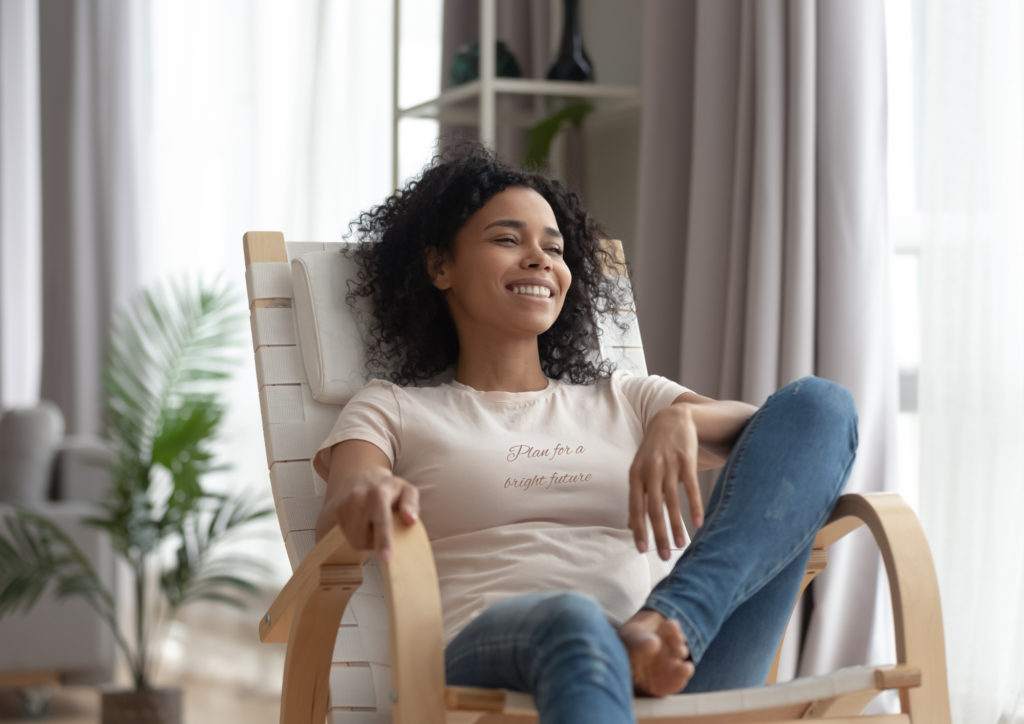
Final Thoughts: Living Better, Not Just Doing More
Planning isn’t just about getting things done—it’s about crafting a life that feels aligned, intentional, and fulfilling. Whether you use a digital planner or a simple notebook, the key is to make planning work for you. Because at the end of the day, true productivity isn’t about doing more—it’s about living better through intentional planning and intentional living.


I love how calming this feels. I’ve always associated planners with hustle culture, but I’m trying to reframe it as something that can actually support my mental health. Would love to hear if you have a morning planning routine?
Thanks, Ciara! I’m with you—planning doesn’t have to be about squeezing in more, it can be about making space. I’m working on a post soon about my current morning routine, but in short: I light a candle, pick one word for the day, and write out a simple page in my digital planner with gratitude and gentle intentions. It sets the tone beautifully. 🌿
This is such a helpful reminder. I bookmarked this post so I can come back to it when I need a reset. Also—do you think digital or paper planning is better for intentional living?
That means a lot—thank you! I honestly think it depends on how your brain works. I use both: digital for flexibility and ease, paper when I want to slow down and connect more intentionally. I’ve noticed that intentionality isn’t about the tool—it’s about the pause we create when we use it. 🕊️